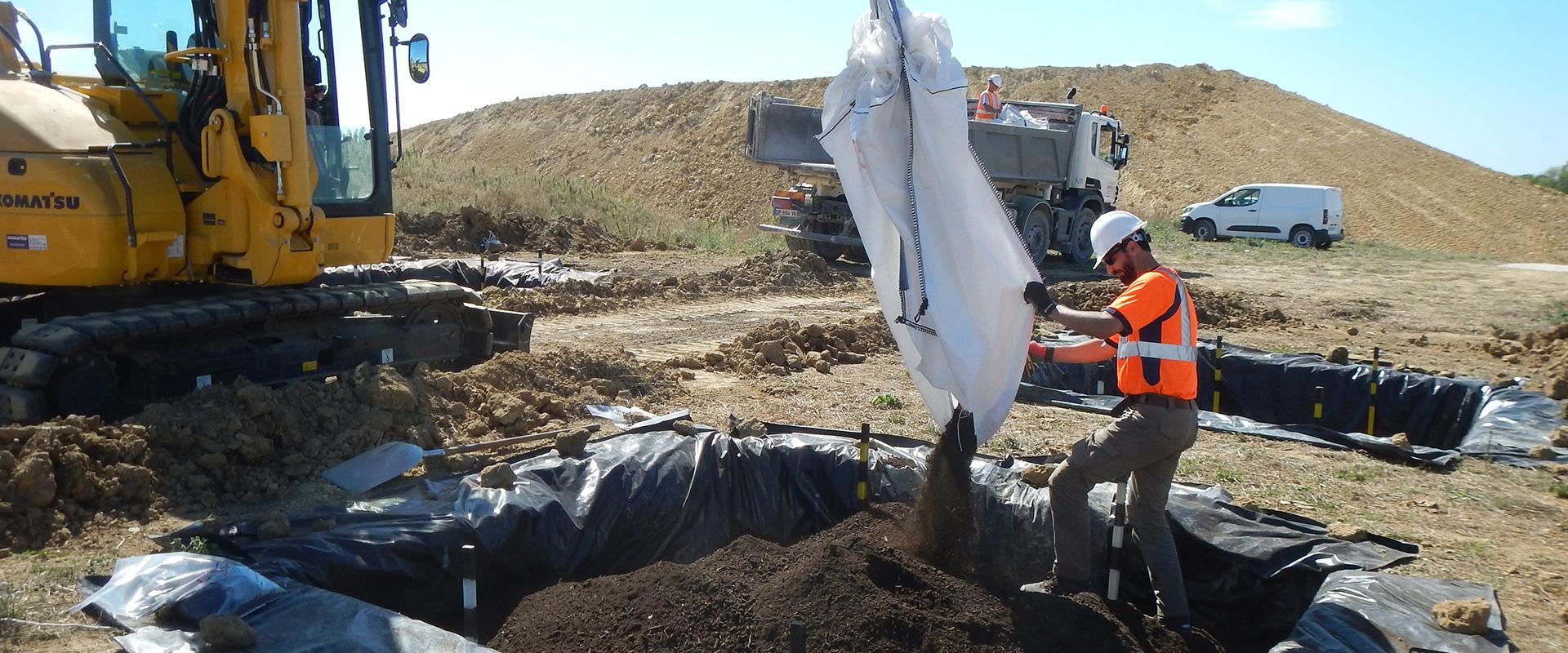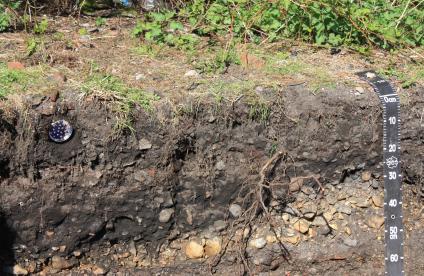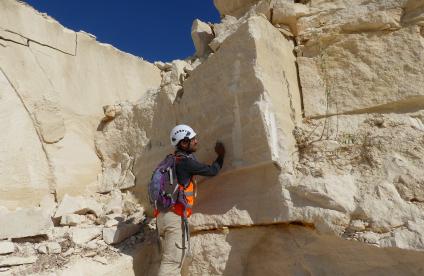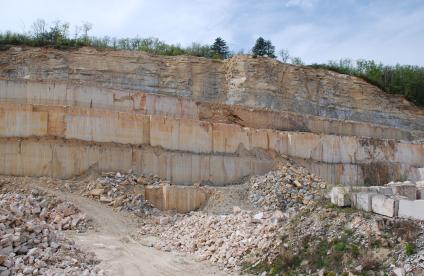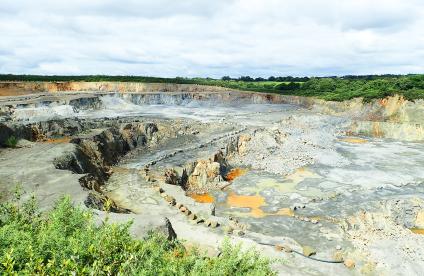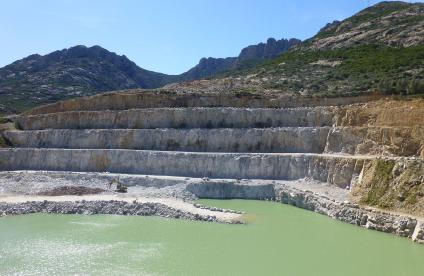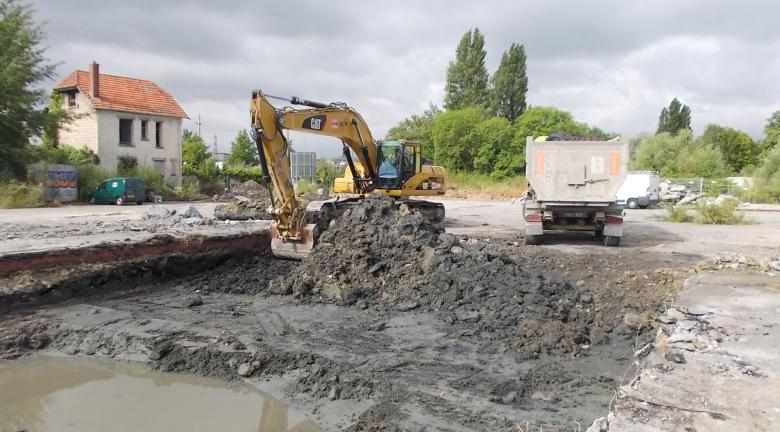
Rehabilitation work on a brownfield site for conversion to residential use (off-site reuse of excavated earth) (2013).
© BRGM - Fabien Lion
Your issues and needs
Every year in France, almost 130 million tonnes of earth are excavated for infrastructure and development projects. Considered as waste if it is removed from its site of origin (Waste Framework Directive 2008), this earth raises a number of questions concerning its reuse or disposal and requires specific treatment.
Beyond the problems posed by the issue of polluted sites and soils, management of earth represents a major challenge for construction and demolition waste treatment. The potential for recycling or reusing this earth is particularly interesting, provided the environmental issues (protection of groundwater) and health concerns (protection of future users of the land) connected with its reuse as landfill for development projects are successfully tackled.
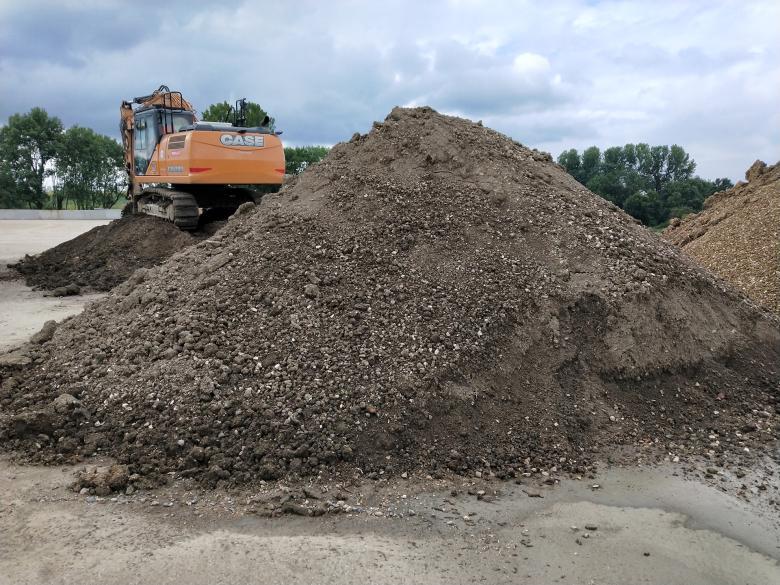
Excavated soils account for 70% of construction waste and are therefore a major resource to be developed for the circular economy.
© BRGM - Philippe Bataillard
Our added value
Apart from its contribution to the production of the various guides and tools regarding the characterisation and off-site management of excavated earth, the BRGM is committed to implementing a coherent strategy to support relevant players by:
- Producing territorial audits and feasibility studies to set up processes for the recycling of excavated earth through the creation of transit hubs;
- Developing sampling and characterisation methodologies for this excavated earth;
- Developing the technology for computer-based excavated earth exchange platforms in order to improve traceability;
- Developing pilot programmes for the treatment of polluted excavated earth and assessing their environmental impact;
- Ensuring sustainability of treatment solutions for excavated earth based on ageing tests and modelling tools;
- Providing training in recycling excavated earth.
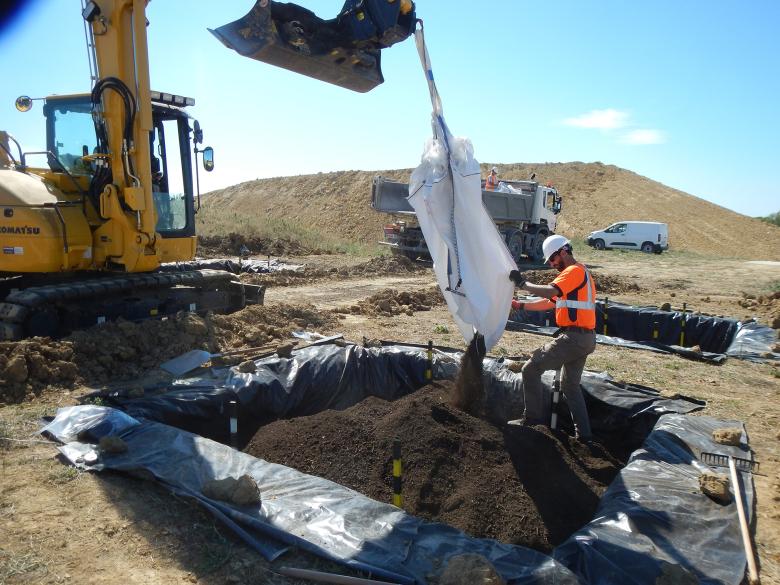
BRGM is investigating solutions for re-using excavated soils as a component for artificially re-creating functional ground.
© BRGM - Philippe Bataillard
Analytical tools and platforms
- PRIME: Platforms for remediation and innovation in environmental metrology
- CARAPHY: Physico-chemical and textural characterisation
- CARMIN: Mineralogical and crystallographic characterisation
- IN’ORGA: Organic and inorganic chemical analysis
Tools
- Guides for off-site recovery of excavated soil (from potentially polluted sites and soils or not) in development projects
- Guide to characterisation of excavated earth in the context of reuse off-site in development projects and using road construction techniques in linear transport infrastructure projects (2020)
- TERRASS: online excavated earth management and traceability application
- HYDROTEX: calculation of the impact of excavated earth on water resources
- BDSolU: urban earth quality database
- Map of geochemical anomalies
- National Register of Waste, Excavated Soil and Sediments
Training
- Recycling of excavated soil in the framework of rehabilitation projects of polluted sites and soils
- HYDROTEX: Interest, principles and use
Some references
- Technical and scientific assistance for the creation of an excavated earth recycling process as part of an urban regeneration operation;
- Developing methods to characterise urban geochemical backgrounds and building the BDSolU database;
- Developing methods to characterise and stabilise contaminants in excavated earth from the Greater Paris Express metro line;
- Producing a pilot project for an on-site excavated earth treatment platform;
- GeoBaPa: a reference base for better management of soil excavated from construction sites;
- Developing innovative processes to reconstruct and restore function to soils from urban waste, including excavated earth, as substitutes for topsoil.
- Design, on behalf of the French government, of the RNDTS (National Register of Waste, Excavated Soil and Sediments) reporting application, which endorses and implements the recommendations of the AGEC law and the so-called "traceability" decree.
To find out more
References
Solutions


